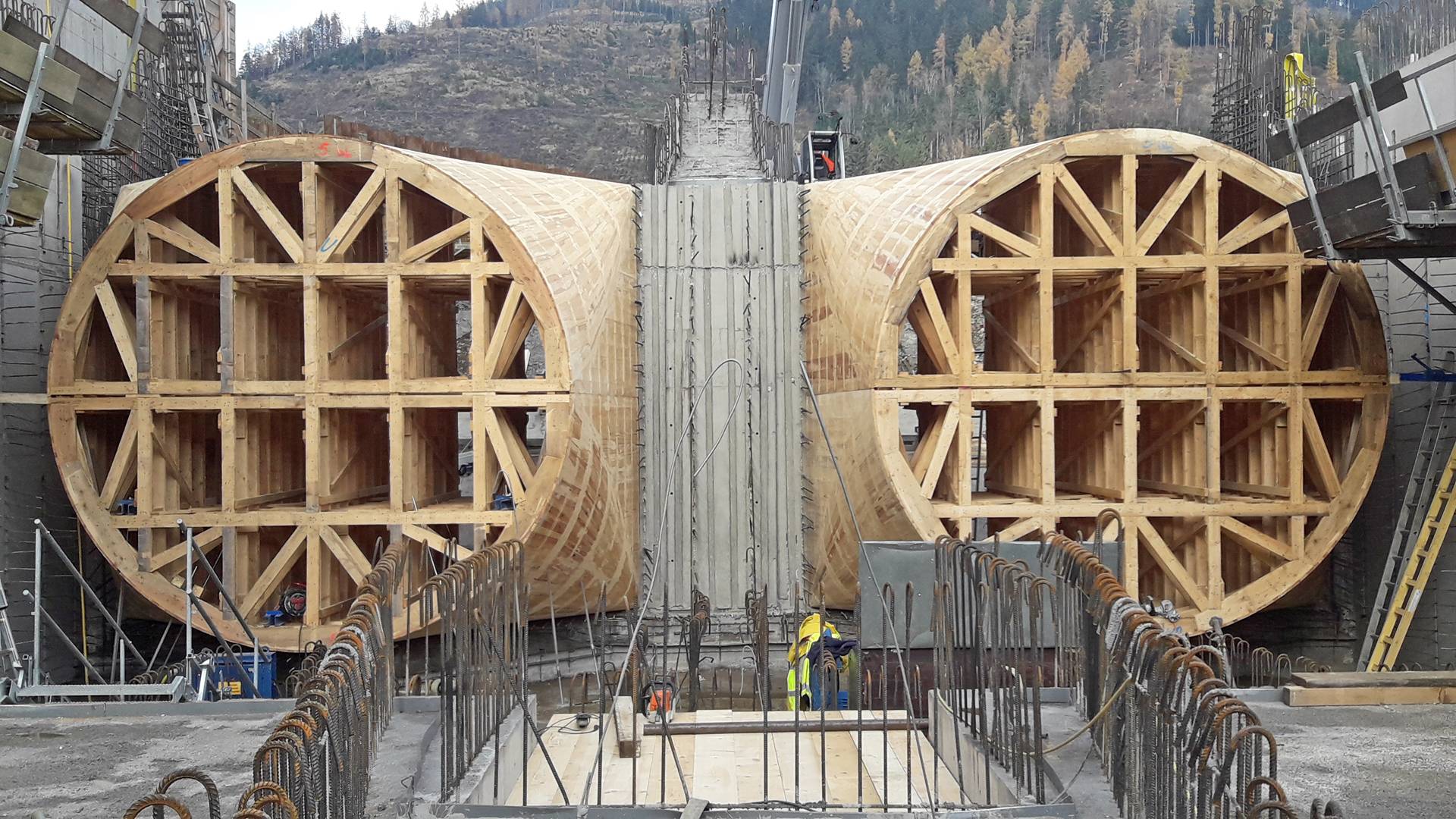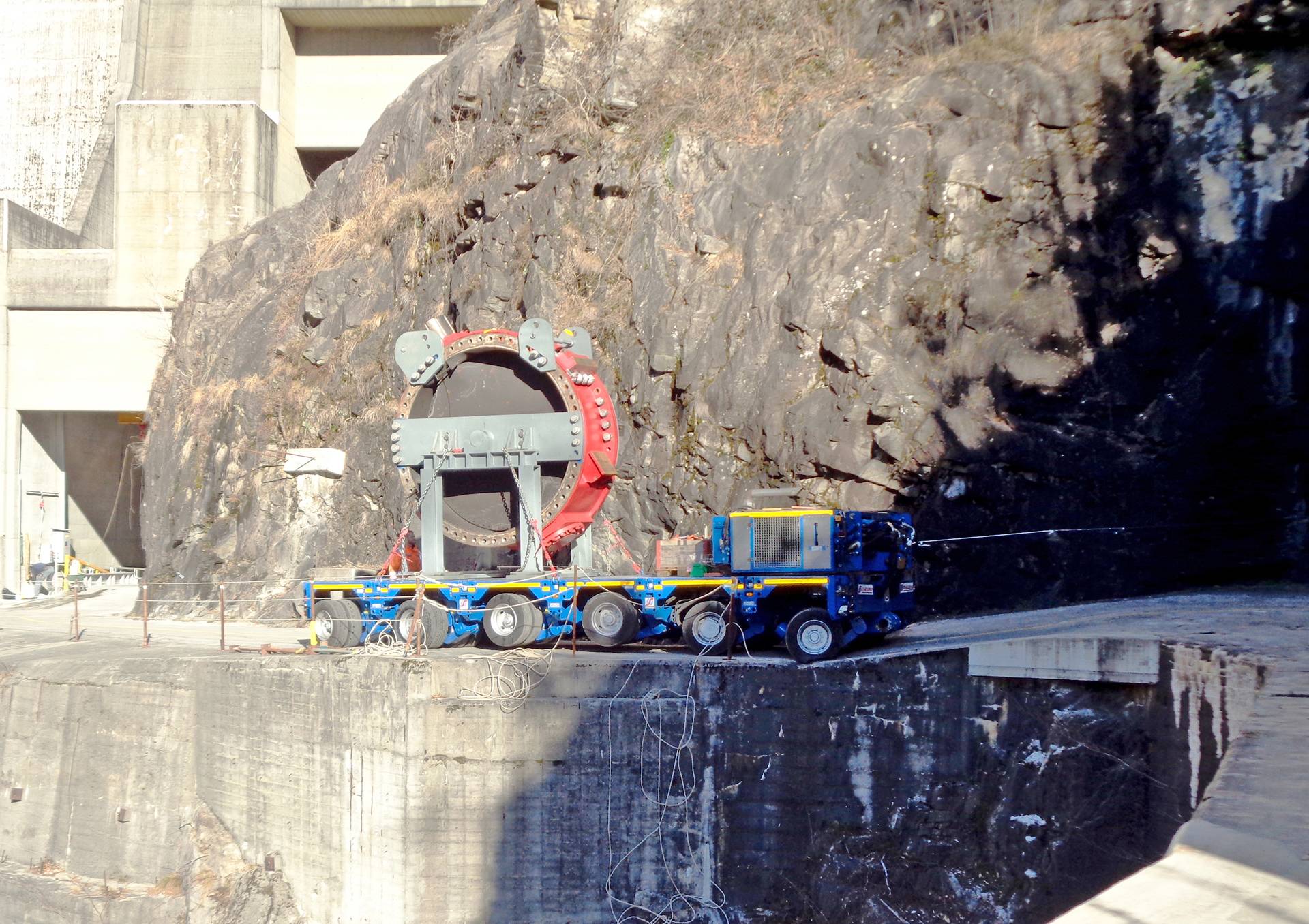Steffturbine convinces with a variety of possible uses and economic efficiency7 min read
Lesedauer: 5 MinutenBased on more than 50 years of experience in the field of conveyor technology, the Swiss WRH Walter Reist Holding AG (WRH) developed the “Steffturbine”.
In the process it adapted the familiar technical principle of waterwheels to modern chain technology, which has proven itself ideally in a number of industrial applications. Thanks to the compact and easy to install turbine system, even small drops and throughflows can be used efficiently, for example, for the energetic utilisation of residual water quantities. Economical operation of the Steffturbine results automatically through the optimal price-performance ratio and the low installation expenses. An extensive tour through the “Steffworld” took place in May of last year in the course of a product introduction at the WRH company headquarters in Hinwil. In the process, in addition to the Steffturbine, the intelligent control system “Steffmaster” and the versatile fish ladder “Steffstep” were also presented in detail.
WRH, together with its subsidiary companies Ferag AG, Denipro AG and WRH Marketing AG, have been developing, building and selling conveyor technology systems for more than five decades. The core competence of WRH thereby exists in further print processing for newspaper and magazine printers. The conveyor systems are used in printing businesses throughout the world. The foundation of the conveyor systems is the rolling conveyance principle, with which kinetic fiction is practically eliminated. This means that even heavy loads can be conveyed over long transport routes in a manner that is gentle on the material and at the same time requires little use of energy. The functional principle of the Steffturbine originates from precisely the transport technology that has been consistently further developed and promoted by WRH in past decades.
Many possible applications
The focus of the technical concept is on a chain run guided by two turning wheels to which paddles are attached and set in motion by the gravity of the water. A permanent magnet generator integrated into the compact turbine housing ensures an electrical output of 12 kW. This makes it possible to generate up to 100,000 kWh in eco-energy even with a drop as of 2 m. Two different sized turbine models with an extraction water quantity of 400 l/s or 600 l/s can be chosen from.
The potential uses of the Steffturbine are thereby extremely versatile. They can, for example, be used for drop steps of naturally flowing waters or commercial canals. However, the Steffturbine can also be used for generating electricity from process water when installed in sewage treatment plants or when used in industry and processing operations requiring the use of large amounts of water, such as paper or food processing.
Only two cradles need to be installed on the grounds for the installation of the Steffturbine. Additional interventions into the natural conditions of a flowing body of water are unnecessary. The turbine unit is delivered in a completely assembled condition and, thanks to placement above ground, prevents any impairment of water quality. Extremely positive from an ecological perspective is the aspect that the turbine is passable for fish, which arises from the flow direction.
Steffturbine used around the world
One of the first Steffturbines of the WRH Walter Reist Holding AG was installed in the so-called Tannertobel, a narrows of the river Jona in the Zurich Oberland, in 2015. Favourable natural conditions for the use of hydroelectric energy have always been provided by the drop step with sliding retention reservoirs. Since the installation of the Steffturbine in the previous year, 70,000 kWh could already be generated for the operating association “Unternehmen Dürnten – Verein zur Förderung ökologisch nachhaltiger Ziele (Dürnten company – association for the promotion of ecologically sustainable objectives”. In keeping with the motto of the association, the installation of the environmentally friendly power generator took place without significant construction measures, and the water flow at the location was not impaired. Two additional Steffturbines are used in Swiss waste water treatment plants. The turbine of the sewage treatment plant La Saunerie near Colombier uses a drop of around 4 m and generates around 45,000 kWh annually. A second Steffturbine is found at the waste water treatment plant Buholz in Emmen, whereby the treated waste water is used to generate energy before being returned back to the flowing body of water. The installation of a Steffturbine in Italy at Ranica in Bergamo is ongoing.
WRH company spokesman Nick Mysicka explicitly points out in the context of the tour through the Steffworld that the principle of the Steffturbine is best suited for use in emerging and developing nations, both for island operation and for feeding into the grid, due to the comparatively low effort involved in installation. Two years ago, the Swiss company set a good example and delivered a Steffturbine for “Susanne’s African School”, also founded by the WRH in Tanzania. The school building in this economically underdeveloped region thus has its own entirely autarkic power supply.
Steffmaster coordinates and optimises renewable energy sources
Steffmaster is also a development of WRH with which the efficiency of renewable forms of energy can be optimised through the use of intelligent automation technology and environmentally friendly storage solutions.
The Steffmaster as a control device enables various regulating combinations with other renewable energy sources. In addition to the the use of hydroelectric energy with the Steffturbine, this new development from WRH also links energy management with solar, wind and biogas power. The energy management of the Steffmaster thus creates an energy and economically efficient linking of power producers, such as the Steffturbine for the use of hydroelectric energy, with batteries and energy consumers.
The control system in this way masters the combination of continuous power generation with hydroelectric energy and stochastic production through photovoltaic and wind power systems, as well as with biogas and sewage gas applications. This makes it possible, thanks to optimised regulation, to generate a maximum of energy from hydroelectric energy, to store surplus energy during production peaks, and to release this energy again as needed. If power production is inadequate due to the time of day or weather conditions, stored electricity can be drawn upon from a battery and directed to the respective consumer. The battery used for this procedure uses a saline solution as an electrolyte and thus consists of environmentally friendly materials. This battery can be recharged, has low investment costs and thus enables a short payback period. By using a battery system, not only the storage of current is guaranteed, bus also an autarkic power supply, whether as an island solution or as an emergency power supply in the grid network mode.
Steffstep overcomes drop steps
The also newly developed fish ladder with the name “Steffstep” from WRH is the logical supplement for the Steffturbine. With this ladder with a modular design for aquatic life forms, river verges, crossing structures, weirs or dam walls can be overcome within a very small space. The potential for usage of the Steffstep can be found in Switzerland alone at several thousand artificial obstacles on various bodies of water. The construction of the Steffstep is thereby based on the well-known technical principle of “vertical slot fish ladders” and is suitable for use on smaller to medium-sized bodies of water. In contrast with most “vertical slot fish ladders” built in concrete, the individual basins of the Steffstep are made of durable plastic.
Like the Steffturbine, the system stands for easy and quick installation, as well as for short planning and construction phases. The step form thus reduces the total construction length of the drop step to be overcome considerably. Thanks to the horizontal installation position of the individual basins, the fish ladder also requires only a small quantity of water and at the same time enables a fish-friendly, moderate flow speed.
Steffworld is dedicated to environmentally friendly technology
“With regard to internationally agreed upon energy and climate targets, goals involving an environmentally sustainable development of power generation systems are also always named. WRH Walter Reist Holding AG also pledges itself to these goals and concentrates in the context of Steffworld on the creation of environmentally compatible systems”, comments company spokesman Nick Mysicka at the finish of the company tour and adds: “Steffturbine, Steffmaster and Steffstep, as elements of the Steffworld, are a clear commitment to energy and economic efficiency with integral environmental compatibility. In interaction with other renewable energy sources, photovoltaic, wind power and biomass systems, the energy management achievable with Steffmaster enables optimisation of production, storage and consumption. WRH Walter Reist Holding AG is setting a pioneering benchmark for the future of energy here and enables innovative concepts for energy producers on the basis of many years of technology know-how.”
Share:


